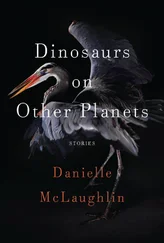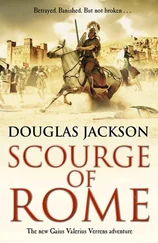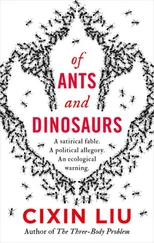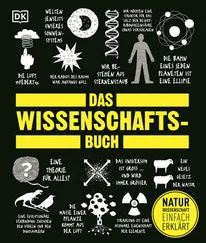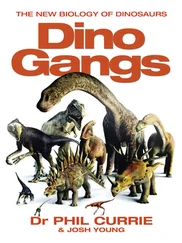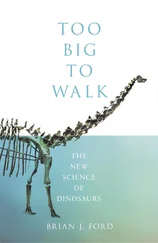Chapman and his team from the American Museum of Natural History in New York found fossil eggs and hatchlings clustered together in and around mud mounds. They even thought that they had found the remains of a dinosaur egg thief called Oviraptor in the act of stealing from a Protoceratop ’s nest. However, we now know that it is more likely that the Oviraptor died defending its own nest.
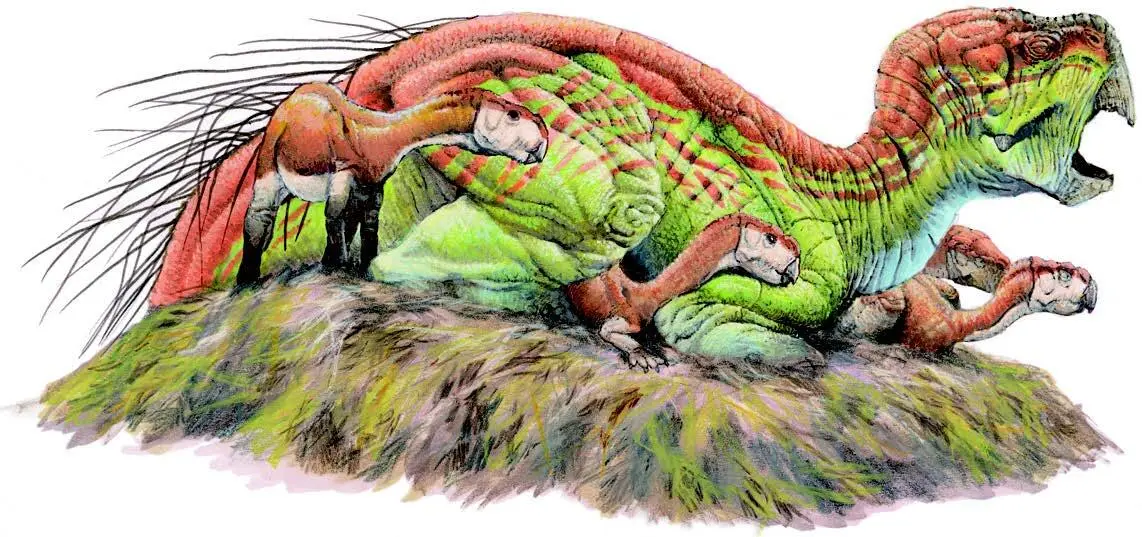
Caption: A nesting Psittacosaurus dinosaur with babies.
Dinosaur eggs ranged in size and shape from tiny round eggs to long oval-shaped ones more than 50cm (20in) long and around 4.0l (8.5pts) in volume. These were, however, small compared to the biggest bird egg, which was laid by the extinct Elephant Bird ( Aepyornis ) and measured more than 1m (3ft) in circumference and 7.3l (15.4pts) in volume. Large eggs need thick shells but these also have to be porous to allow the foetus to ‘breathe’. Consequently, dinosaur eggs could not be too large. Like modern- day turtles, many dinosaurs laid large numbers of eggs because relatively few of the babies would survive into adulthood.
In the 1970s, finds from the so-called Egg Mountain site in Montana, USA, revealed what may have been a shared nesting ground and hatchery for the duck-billed dinosaur Maiasaura . Several nests up to 2m (6.6ft) wide have been found, made of layers of plant material and mud topped by a hollow in which up to 12 eggs were laid. The 9m-long (30ft) mother was far too big to have sat on the eggs but probably would have fed her babies, which could not have looked after themselves to begin with.
In contrast, hatchlings of the small theropod Troodon , which also nested around Egg Mountain, were much more precocious and probably began to feed themselves very early on. Surprisingly, there is evidence that even some of the biggest plant-eating sauropods stayed around their nests for some time, presumably to try to protect the eggs and babies from predators.
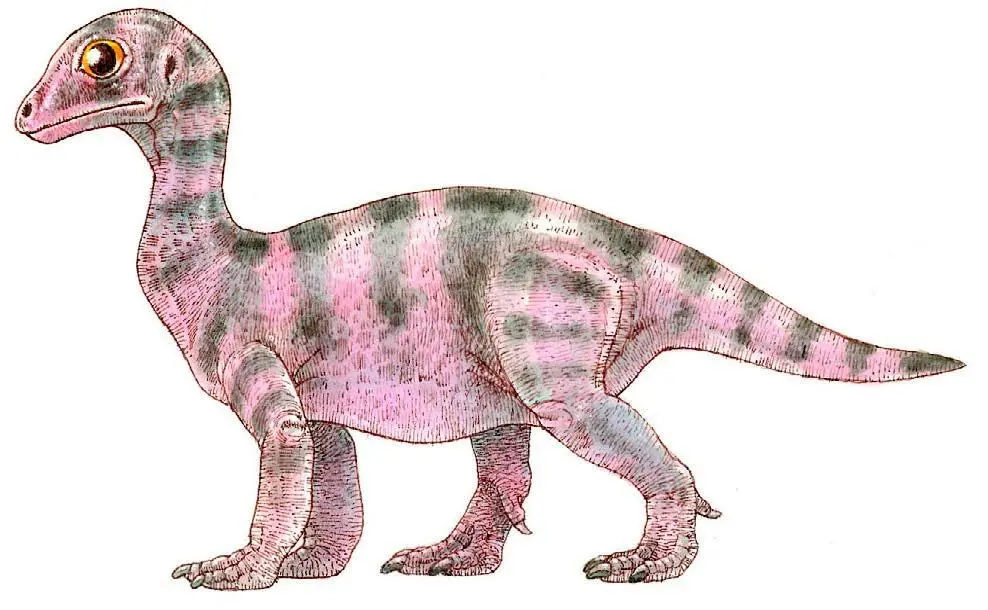
Caption: A Mussaurus hatchling. Some of the skeletons of this species could fit into the palm of a hand.
There are a number of reasons why animals, and even humans, fight one another. Disputes over food, territory and mates commonly lead to conflict, and dinosaurs were no exception to the rule. However, our understanding of dinosaur disputes is biased by what information we can recover from the fossil record and what can be inferred from general principles of animal behaviour.
Obviously, the main arena of conflict results from the predator–prey relationship between meat eaters and plant eaters. Predators have to be appropriately armed to catch and kill their prey and, as we have seen, this is primarily a matter of being able to detect the prey, surprise it and then catch it with claws or teeth. Inevitably, eggs, babies and juvenile dinosaurs would have been most vulnerable to predation. From the prey’s point of view, the matter is largely one of flight or fight – in other words, being able to run away or defend itself.
Some of the small plant-eating dinosaurs opted for the flight mechanism and were fleet of foot. The two-legged ornithomimids, for example, may have been able to run at speeds of up to 40kph (25mph). At the other end of the scale, giant sauropods, once grown up, were so big they would have been invulnerable. Medium-sized but heavy, slow plant eaters such as the ceratopsians, stegosaurs and ankylosaurs evolved a variety of types of armour and defensive weaponry. The ceratopsians are characterized by their helmet-like skulls with prominent rhino-like horns. The stegosaurs had plates and spikes along their back and tail, while the ankylosaurs had tough bony plates embedded in their skin as well as bone-crunching tail clubs. The same weaponry was probably also used by males when fighting one another in territorial disputes or over females. Some of the defensive weaponry that is not as structurally robust as it looks, such as the neck flanges and frills of the ceratopsians, may also have had other functions, such as for male display, signalling and species recognition.

Caption: A Repenomamus with a baby Psittacosaurus .
Medium-sized plant eaters that were neither fast movers nor well armoured developed other means of defending themselves against predators. The hadrosaurs, for example, were equipped with a variety of strange bony structures on their skulls, some of which may have been used to amplify calls to other members of the herd to warm against a nearby predator.
And, finally, we now know that dinosaurs did not have it all their own way. Recently, the fossil of a badger-sized mammal called Repenomamus has been found with the remains of a baby psittacosaur in its stomach cavity.

Caption:
Brachiosaurus , quite possibly too large for most predators.
When dinosaur footprints were first seriously studied they presented a considerable puzzle. Footprints and tracks found in the early 19th century in Massachusetts, USA, were initially seen as evidence for the Old Testament Flood. But by the 1830s the Reverend Professor Hitchcock of Amherst College had developed the new science of palaeoichnology, or the study of fossil footprints. He thought that the abundant three-toed footprints that occurred in strata dating from the Late Triassic (210 million years ago) and Jurassic (200–145 million years ago) must have been made by birds, some of which had to be much larger than any species living today. We now know, however, that these particular prints were made by two-legged (bipedal) dinosaurs.
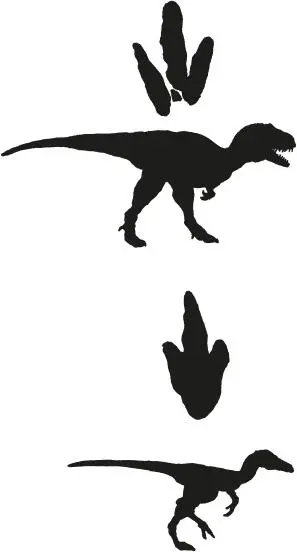 The modern study of dinosaur prints can tell us a great deal about the animals’ behaviour. For instance, from print size, the distance between prints and estimates of the leg length of the animals that made them, it is possible to calculate the speed at which the animal was moving. Some small, lightly built bipedal dinosaurs seem to have been capable of running at speeds of up to 40kph (25mph).
The modern study of dinosaur prints can tell us a great deal about the animals’ behaviour. For instance, from print size, the distance between prints and estimates of the leg length of the animals that made them, it is possible to calculate the speed at which the animal was moving. Some small, lightly built bipedal dinosaurs seem to have been capable of running at speeds of up to 40kph (25mph).
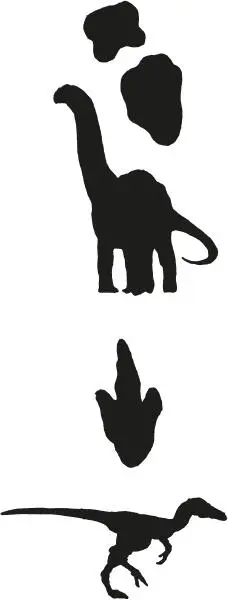 The largest quadrupedal sauropods were so massive that they were capable of only a fast saunter at around 20kph (12mph).
The largest quadrupedal sauropods were so massive that they were capable of only a fast saunter at around 20kph (12mph).
Sets of trackways made by the same kind of animal have been found, showing that certain dinosaurs moved around in herd-like groups, especially plant eaters such as the iguanodontids and hadrosaurs. Presumably this behaviour was for protection. In contrast, many theropod trackways tend to be solitary, showing that they were lone hunters, although not all behaved in this way – some theropods are also known to have grouped together.
Читать дальше
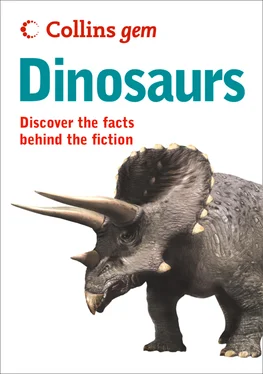




 The modern study of dinosaur prints can tell us a great deal about the animals’ behaviour. For instance, from print size, the distance between prints and estimates of the leg length of the animals that made them, it is possible to calculate the speed at which the animal was moving. Some small, lightly built bipedal dinosaurs seem to have been capable of running at speeds of up to 40kph (25mph).
The modern study of dinosaur prints can tell us a great deal about the animals’ behaviour. For instance, from print size, the distance between prints and estimates of the leg length of the animals that made them, it is possible to calculate the speed at which the animal was moving. Some small, lightly built bipedal dinosaurs seem to have been capable of running at speeds of up to 40kph (25mph). The largest quadrupedal sauropods were so massive that they were capable of only a fast saunter at around 20kph (12mph).
The largest quadrupedal sauropods were so massive that they were capable of only a fast saunter at around 20kph (12mph).
